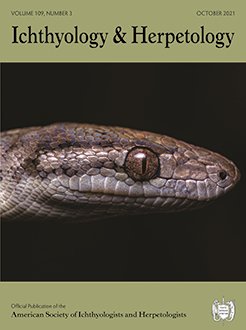Femoral gland secretions in lizards convey chemical information about the health and social status of the depositing individual. These secretions influence behaviors related to female mate choice and male–male competition, but little is known about how they are first located by lizards in the environment. Secretions are visually conspicuous and can be sighted from a distance by visually adept lizards, but the specificity of secretion reflectance to the depositing species remains unknown. We examined the reflectance spectra of femoral gland secretions from two sympatric lizard species, Aspidoscelis tigris and Gambelia wislizenii, to determine whether secretions could be visually distinguished. Mean reflectance did not differ between species, but A. tigris had higher reflectance in ultraviolet wavelengths. For both species, lizards in better body condition, as determined by the residuals of the relationship between snout–vent length and body mass, had higher ultraviolet reflectance. In summary, our results indicate that femoral gland secretions can be visually discriminated between species if the discriminating lizard is ultraviolet sensitive.
How to translate text using browser tools
31 August 2021
Patterns of Visual and Ultraviolet Reflectance in Femoral Gland Secretions of Two Desert Lizards
Jacob F. Penner,
Maria A. Eifler,
Douglas A. Eifler
ACCESS THE FULL ARTICLE

Ichthyology & Herpetology
Vol. 109 • No. 3
October 2021
Vol. 109 • No. 3
October 2021




